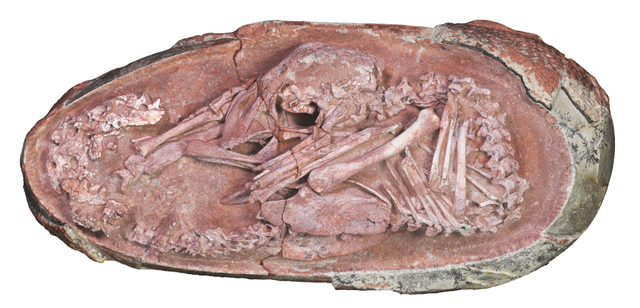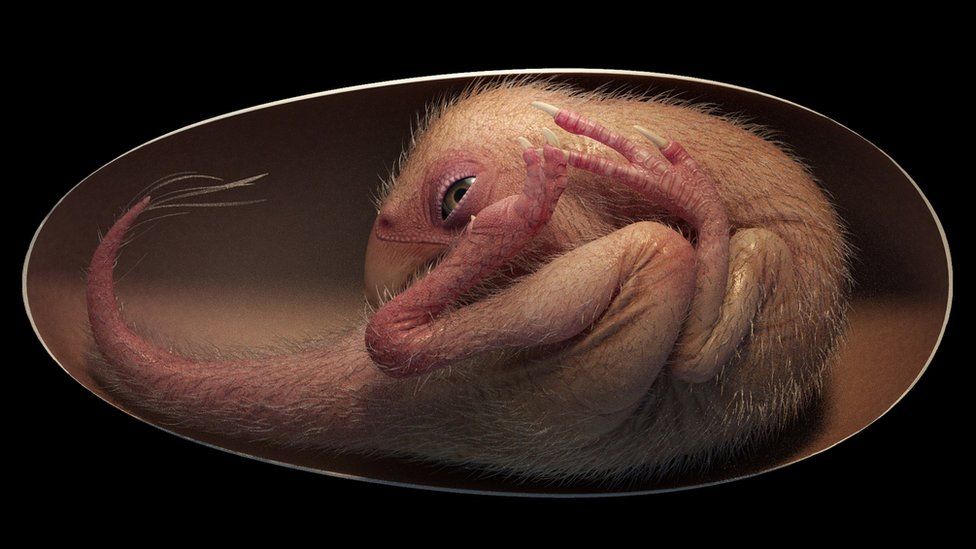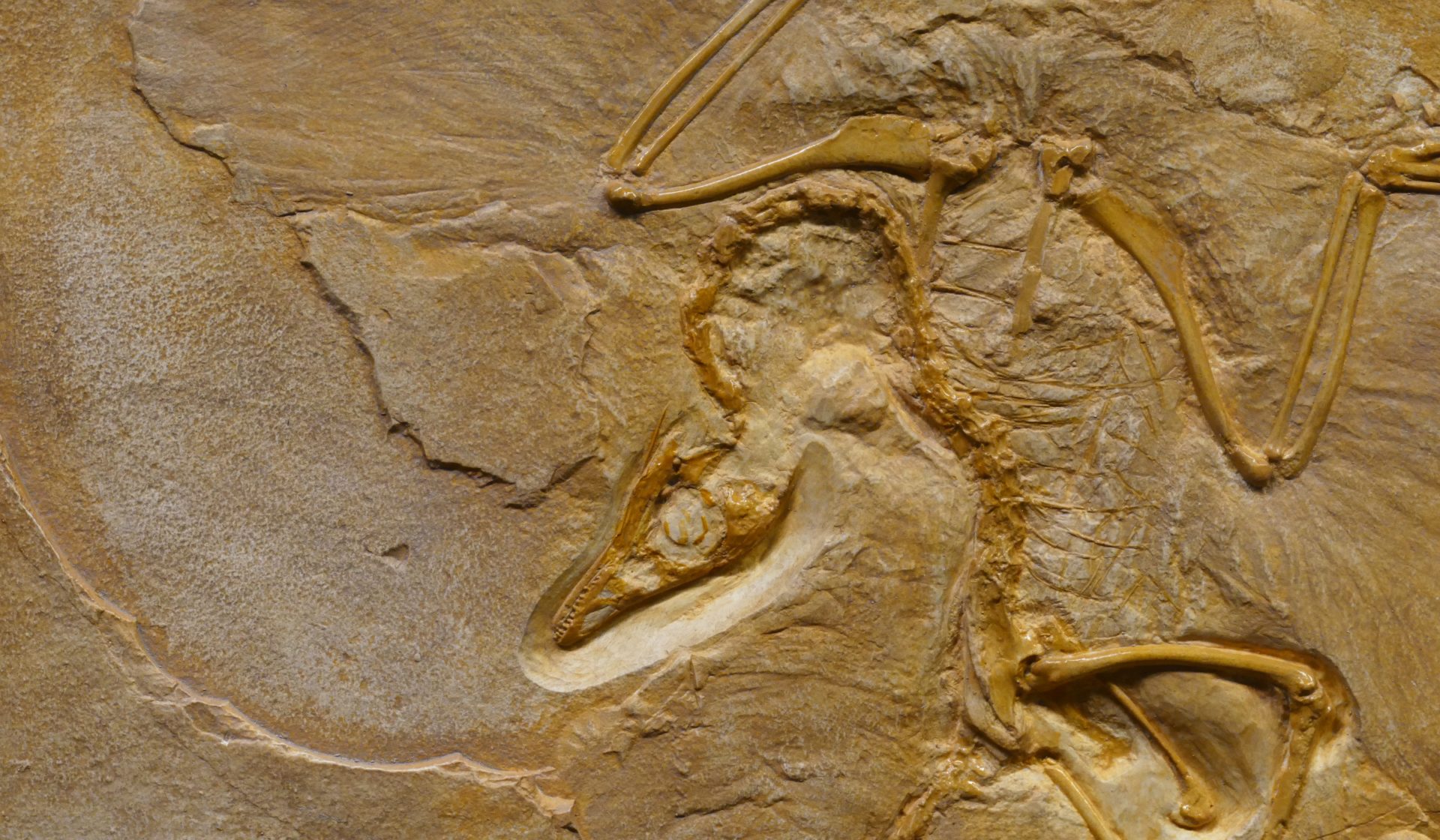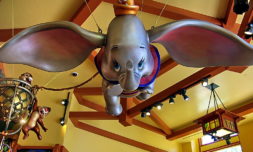Believed to be between 66 and 72 million years old, the fossil was found in southern China and offers new insight into the very first stages of animal life on Earth.
On Tuesday, scientists announced the discovery of the most complete dinosaur embryo ever found, tucked into a position that’s strikingly similar to today’s unhatched chickens.
Found in the Late Cretaceous rocks of Ganzhou in southern China, the fossil – which has been dubbed ‘Baby Yingliang’ – belongs to an oviraptorosaur (a group of beaked therapod dinosaurs closely related to modern birds) and is believed to be between 66 and 72 million years old.
Likely preserved by a sudden mudslide that buried it and protected it from scavengers, it would have grown two to three metres had it lived to be an adult and would probably have fed on plants.


‘It’s one of the best dinosaur embryos ever found in history,’ Fion Waisum Ma, one of the researchers, told AFP, adding that while many dinosaur eggs have been found, embryos are rare – and well-preserved embryos are even rarer still. ‘Dinosaur embryos are some of the rarest fossils and most of them are incomplete with the bones dislocated.’
Though the egg was actually acquired in 2000 by stone mining company Yingliang Group, another 15 years passed before anyone acknowledged its significance, when a few fragile bones exposed by a crack in its surface hinted at what lay beneath.
For other fossils, scientists have used CT scans to reveal details of the bones hidden inside, however, the type of sediment filling the egg made it difficult to discern the bones from the background.






















